Keywords
Seyhan Dam Lake, Fish species, Taxonomy, Ichthyofauna
Introduction
Total area surface of Turkey’s Lakes is 9200 km2. Turkey has approximetly 200 natural lakes, 679 pool and 114 dam lakes. In a study made in Turkey, 22 wetlands were present according to Ramsar agreement of fish criteria. Sixteen of these wetlands are natural lakes and two of them are river basins (Kucuk and Ikiz, 2004).
There are many studies, carried out by Turk-ish and foreign researchers, on the fresh water fish fauna of Turkey. The first study on freshwa-ter fish fauna of Turkey was carried out by Ab-bolt in 1835 (Geldiay and Balik, 1996). Follow-ing studies were predominantly on taxonomy and ecology of fish in the different regions of Turkey Kosswig (1939), Battalgil (1941), Sozer (1941), Kosswig and Battalgil (1943), Numann (1958), Ladiges (1960), Balik (1988), Kalkan and Er-demli (1994), Geldiay and Balik (1996), Ozulug (1999), Altun (1999), Erk’akan et al. (1999), Kuru (2004), Ugurlu and Polat (2007) and Kara et al. (2010).
Seyhan Dam Lake is one of the most im-portant freshwater reservoirs for fisheries pro-duction in the southern Anatolia region. To date, several fisheries studies; Sarihan and Toral (1973), Sarihan (1974), Sarihan and Kumova (1984), Ozyurt and Avsar (2002), Alagoz (2005), Alagoz et al. (2006), Erguden Alagoz et al. (2008a), Erguden Alagoz and Erguden (2008b), Erguden Alagoz and Goksu (2009, 2010) were reported in Seyhan Dam Lake which was built on Seyhan River.
Commercial fisheries in the Seyhan Dam Lake started in the early 70’s just after trans-plantation of pike-perch, Sander lucioperca (Lin-naeus, 1758) (1971 and 1973), (DSI, 1984). Later, Common carp, Cyprinus carpio Linnaeus, 1758 transplantation was also carried out be-tween 1976 and 1980 by DSI (1985). However, pikeperch population destroyed small fish carp population and unbalanced cyprinid fish stock unusal changing in the lake. Similarly, Ozyurt and Avsar (2002) indicated that pikeperch espe-cially feed on small carp fish and young roach, Rutilus rutilus (Linnaeus, 1758). Thus, they can change species balance in the Seyhan Dam Lake.
By being the most productive inland water reservoir in terms of usefullness of fish resources, Seyhan Dam Lake provides economical benefits to the Cukurova region and people who lives there. The dispersion of inoculated carp and pike-perch had a considerable effect on the dispersion of other fish species due to the provoking fact. Therefore, this study has been carried out to es-timate relationship between current and previous studies in terms of fish population distribution. It was also aimed to determine the current compo-sition of fish species in the dam lake.
Materials and Methods
Seyhan Dam Lake is in the boundaries of Adana (Figure 1) and an important inland water resorvoir in southeast Mediterranean. It was built on Seyhan River for irrigation, prevention of flood and electiricity in 1956. The lake is ap-proximetly 4 km wide, 23 km long, and maxi-mum 45 m deep in spring season and the area is maximum 9200 hectares. Altitude from sea is nearly 6 meters (Kirgiz, 1984).
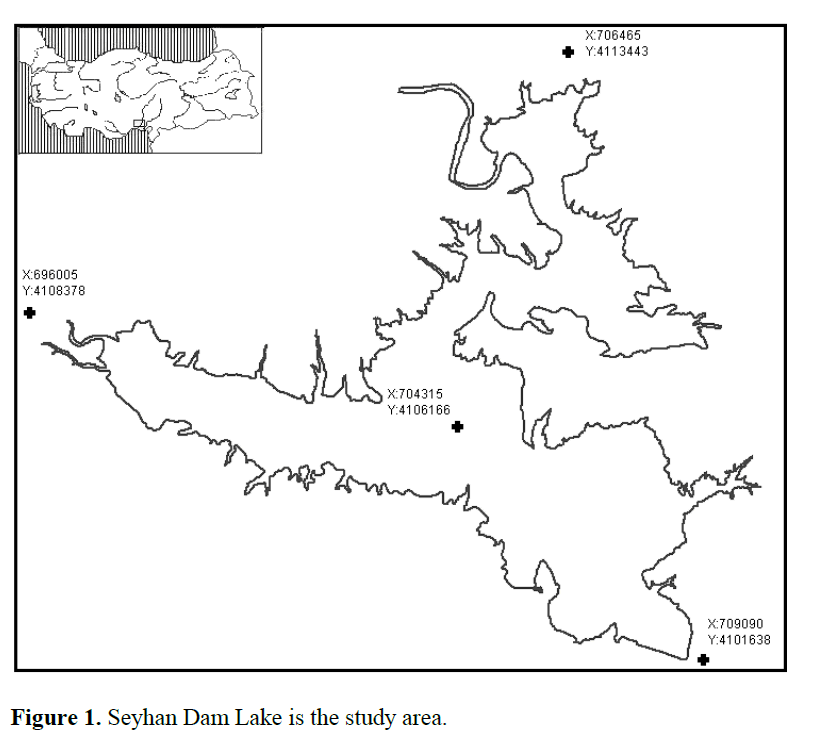
Figure 1: Seyhan Dam Lake is the study area.
Fish samples were caught periodically every month from March 2004 to February 2005. A to-tal of 804 individuals were collected using gill nets, scoop nets, trammel nets with various mesh sizes. While putting the samples in plastic con-tainers, catching date, weather situation were noted and then the containers were labeled. Pho-tographs of fish samples were taken in the study area and the laboratory 4-5% formaldehyde solu-tion were used for the first fixation and then 70% alcohol was added for preservation. Morphomet-ric measurements were carried out with a 0.1 mm digital caliper. Some meristic characteristics, such as rays in dorsal, ventral, anal and pectoral fins, caudal fins, gill rakers, lateral line, transver-sal scales and number of barbels, were deter-mined. The samples were deposited at the Fish-eries Faculty of the Çukurova University, Tur-key. Identification of fish samples were used from Geldiay and Balik (1996), Erk’akan et al. (1999), Banarescu and Boutskaya (2003), Kuru (2004), Erk’akan et al. (2007, 2008), and Turan et al. (2006, 2008, 2009).
Results and Discussion
A total of 23 species belonging to 22 genera and 9 families (Salmonidae, Cyprinidae, Cobi-tidae, Siluridae, Clariidae, Cyprinodontidae, Poe-cilidae, Percidae, Blennidae) were caught from Seyhan Dam Lake, which were listed in Table 1. The classifications of specimens were done ac-cording to Kuru (2004).
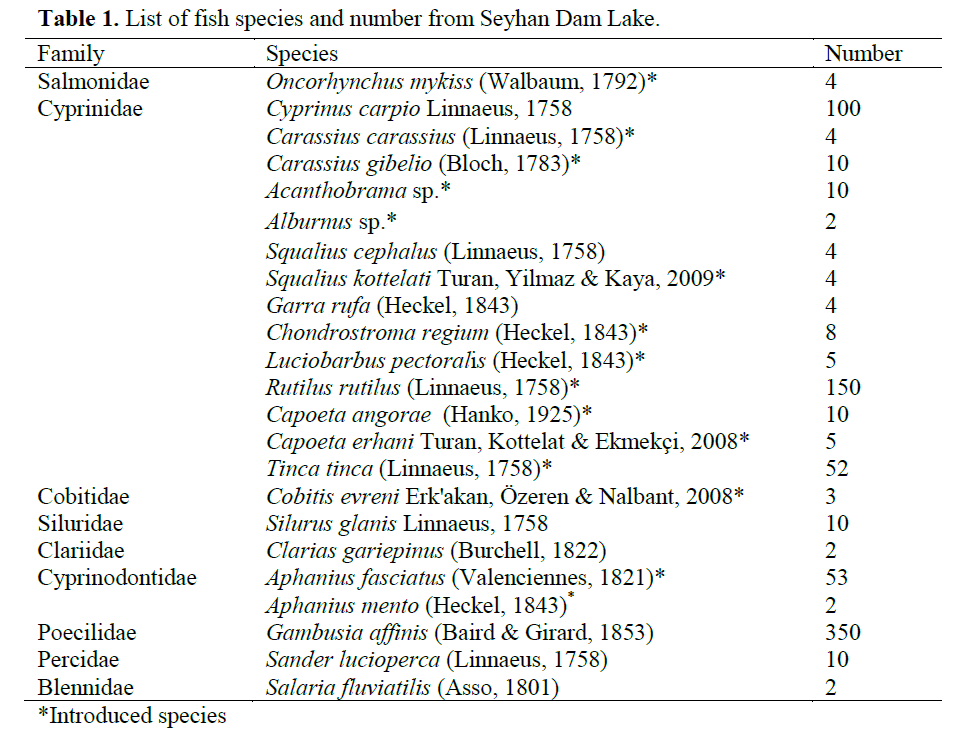
Table 1: List of fish species and number from Seyhan Dam Lake.
Family: Salmonidae
Oncorhynchus mykiss (Walbaum, 1792)
Material examined: 10 September 2004, 1 specimens; 15 January 2005, 3 specimens.
Diagnostic characteristics: TL: 24.0-35.7 cm, D: III-IV 10-12, A: III-IV 8-12, P: I 12-13, V: II 8-9, C: 19. Lateral line scales: 135-150 (Figure 2).
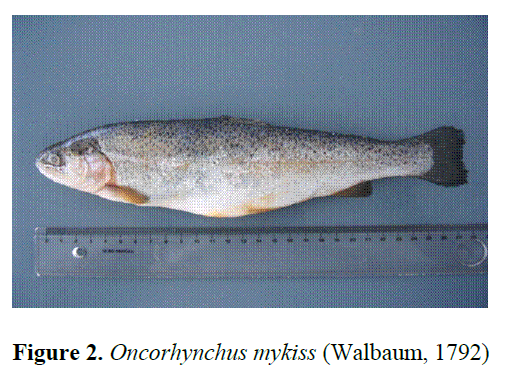
Figure 2: Oncorhynchus mykiss (Walbaum, 1792).
Family: Cyprinidae
Cyprinus carpio Linneaus, 1758
Material examined: 17 March 2004, 12 specimens; 18 April 2004, 2 specimens; 15 May 2004, 3 specimens; 15 June 2004, 10 specimens; 17 July 2004, 3 specimens;14 August 2004, 10 specimens; 10 Semptember 2004, 15 specimens; 15 October 2004, 6 specimens; 19 November 2004, 12 specimens; 16 December 2004, 1 specimens; 15 January 2005, 12 specimens; 17 February 2005, 10 specimens; 18 March 2005, 4 specimens.
Diagnostic characteristics: TL: 20.0-45.0 cm, 27-28 gill-rakers on the first branchial arch; D: III 17-21, A: III 5, P: I 13-14, V: II 6-8. Lateral line scales: 30-37 (Figure 3a and 3b).
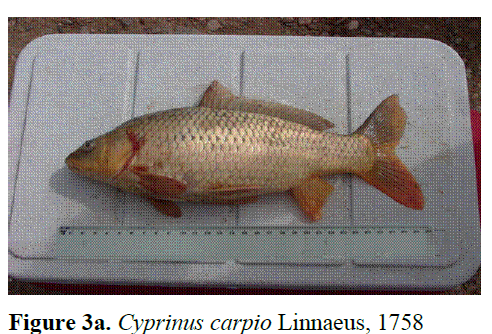
Figure 3a: Cyprinus carpio Linnaeus, 1758.
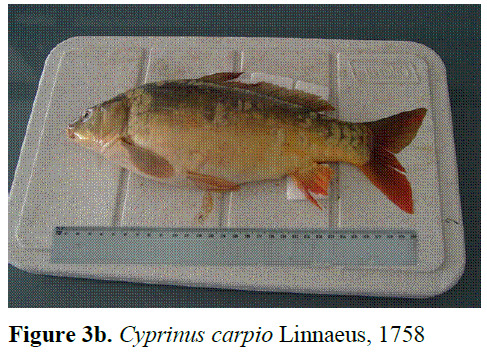
Figure 3b: Cyprinus carpio Linnaeus, 1758.
Carassius carassius (Linnaeus, 1758)
Material examined: 16 December 2004, 2 specimens; 19 November 2004, 2 specimens.
Diagnostic characteristics TL: 17.5-35.00 cm, 23-34 gill-rakers on the first branchial arch; D: III 20-21, A: III 5-6, P: I 16-17, V: II 7-8. Lateral line scales: 29-30, Transversal scales: 5-6. (Figure 4).
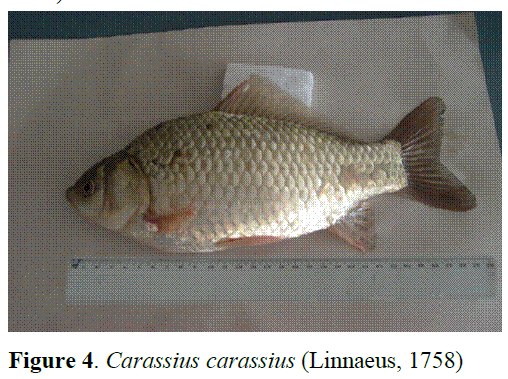
Figure 4: Carassius carassius (Linnaeus, 1758).
Carassius gibelio (Bloch, 1783)
Material examined: 15 October 2004, 5 specimens; 19 November 2004, 5 specimens
Diagnostic characteristics: TL: 20.0-37.0 cm, 45-50 gill-rakers on the first branchial arch; D: IV 15, A: III 6, V: II 6, P: I 13. Lateral line scales 30, Transversal scales: 7/6 (Figure 5a,b).
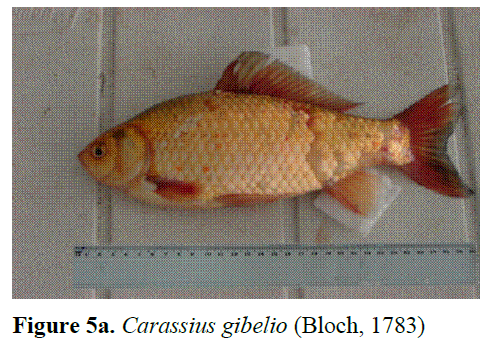
Figure 5a: Carassius gibelio (Bloch, 1783)
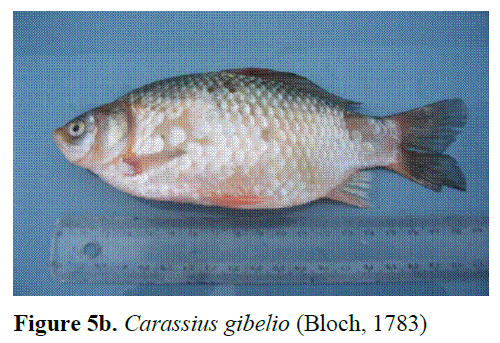
Figure 5b: Carassius gibelio (Bloch, 1783)
Acanthobrama sp.
Material examined: 18 April 2004, 7 speci-mens; 17 November 2005, 3 specimens
Diagnostic characteristics: TL: 12.0-15.5 cm, D: II 7-8, A: II 13-15, P: I 13, C: 25. Lateral line scales: 70-74, Transversal scales: 12-13/6-7 (Figure 6).
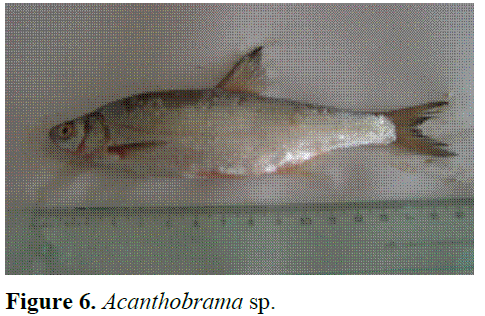
Figure 6: Acanthobrama sp.
Alburnus sp.
Material examined: 15 October 2004; 2 specimens.
Diagnostic characteristics: TL: 13.8-22.0 cm, D: III 11, A: III 17. Lateral line scales: 64 (Figure 7).
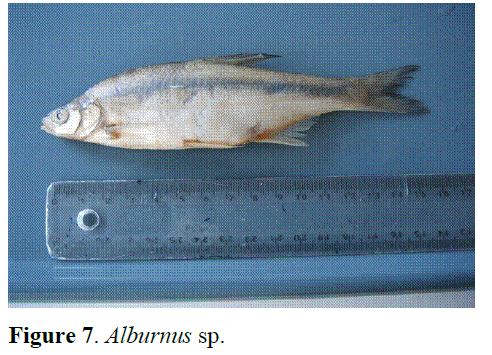
Figure 7: Alburnus sp.
Squalius cephalus (Linnaeus, 1758)
Material examined: 18 April 2004, 2 speci-mens; 17 February 2005, 2 specimens.
Diagnostic characteristics: TL: 18.0-26.0 cm, 8–9 gill rakers on the first arch. D: II 9, A: II 8-9, P: I 14, V: I 8. Lateral line scales: 44-46, Trans-versal scales: 7/4 (Figure 8).
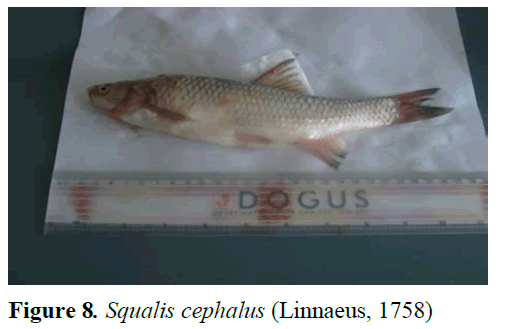
Figure 8: Squalis cephalus (Linnaeus, 1758).
Squalius kottelati Turan, Yilmaz & Kaya, 2009
Material examined: 18 April 2004; 4 speci-mens.
Diagnostic characteristics: TL: 15.0-18.0 cm, D: III 8–9, A: II 9, P: I 16. Lateral line scales: 40–41, Transversal scales: 7–8/4 (Figure 9).
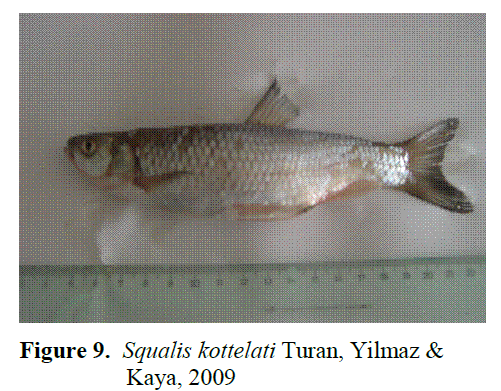
Figure 9: Squalis kottelati Turan, Yilmaz & Kaya, 2009.
Garra rufa (Heckel, 1843)
Material examined: 16 December 2004; 4 specimens.
Diagnostic characteristics: TL: 7.8-10.0 cm, D: III 8, A: III 4-5, P: I 14, V: I 7. Lateral line scales 34–35, Transversal scales:4/3 (Figure 10).
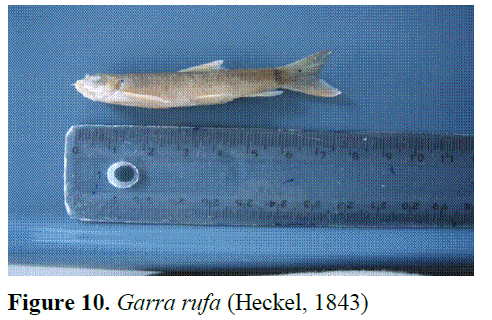
Figure 10: Garra rufa (Heckel, 1843)
Chondrostoma regium (Heckel, 1843)
Material examined: 14 August 2004, 3 speci-mens; 16 December 2004, 5 specimens.
Diagnostic characteristics: TL: 14.0-23.0 cm, D: III, 8-12, A: III, 10-11, P: I 15-16, V: I-II, 6-8. Lateral line scales: 64-68 (Figure 11).
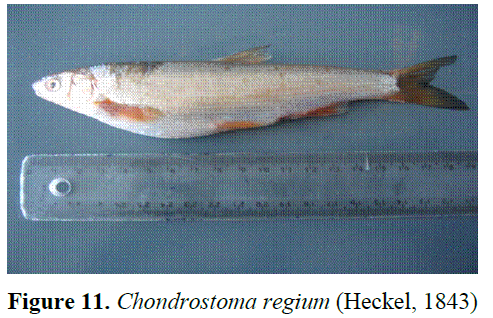
Figure 11: Chondrostoma regium (Heckel, 1843)
Luciobarbus pectoralis (Heckel, 1843)
Material examined: 17 February 2005, 5 specimens.
D: II 7-8, A III 10-11, P: I 16-19, V: I-II, C: 26. Lateral line scales: 53, Line transversal: 10/7.
Diagnostic characteristics: TL: 17.8-19.5 cm, Lateral line scales: 45-48, gill rakers: 15-17 (Figure 12).
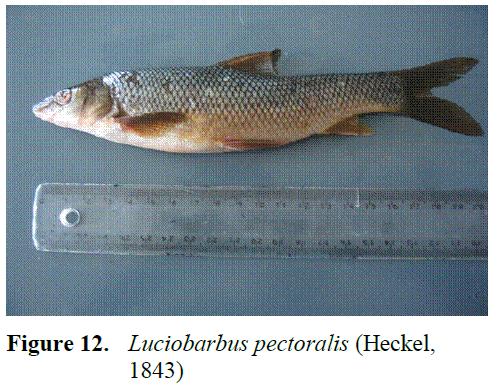
Figure 12: Luciobarbus pectoralis (Heckel, 1843)
Rutilus rutilus (Linnaeus, 1758)
Material examined: 17 March 2004, 4 speci-mens; 18 April 2004, 10 specimens; 15 May 2004, 8 specimens; 15 June 2004, 12 specimens; 17 July 2004, 8 specimens; 14 August 2004, 22 specimens; 10 Semptember 2004, 10 specimens; 15 October 2004, 3 specimens; 19 November 2004, 2 specimens; 16 December 2004, 11 specimens; 15 January 2005, 30 specimens; 17 February 2005, 14 specimens;18 March 2005, 16 specimens.
Diagnostic characteristics: TL: 14.2-25.0 cm, 11–16 gill rakers on the first arch. D: III 9-10, A: II 7–8. Lateral line scales: 45-60, Transversal scales: 7–10/3–4 (Figure 13).
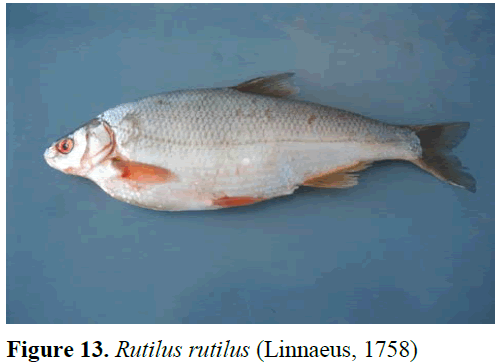
Figure 13: Rutilus rutilus (Linnaeus, 1758)
Capoeta angorae (Hanko, 1925)
Material examined: 17 March 2004, 2 speci-mens; 15 January 2005, 4 specimens; 17 Febru-ary 2005, 4 specimens.
Diagnostic characteristics: TL: 12.0-22.0 cm, D II 8, A III 4-5, P: I 16-18, V: I-II, C: 22-23. Lateral line scales: 67, Transversal scales: 15/11 (Figure 14).
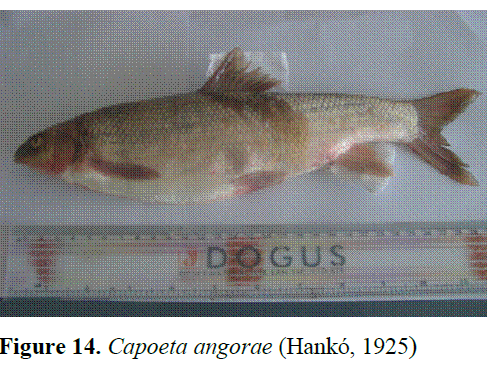
Figure 14: Capoeta angorae (Hankó, 1925)
Capoeta erhani Turan, Kottelat & Ek-mekçi, 2008
Material examined: 15 January 2005, 5 specimens.
Diagnostic characteristics: TL: 13.5-21.0 cm, D: II-III 8-9, A: III 5, P: I 14-17, V: I 7-8, C: 22-26, Lateral line scales: 67, Transversal scales: 12/ 9, gill rakers: 26-27, pharyngeal teeth: 4.3.2-2.3.4. (Figure 15).
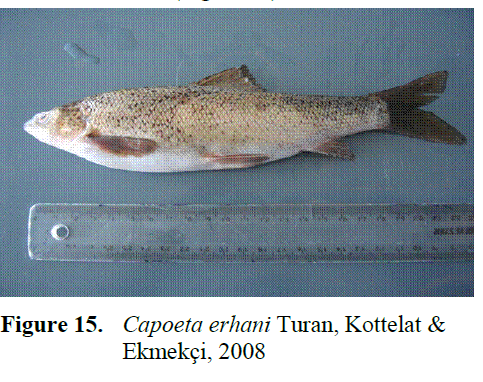
Figure 15: Capoeta erhani Turan, Kottelat & Ekmekçi, 2008
Tinca tinca (Linnaeus, 1758)
Material examined: 17 March 2004, 9 speci-mens; 18 April 2004, 12 specimens; 15 May 2004, 7 specimens; 15 June 2004, 3 specimens; 17 July 2004, 1 specimens;14 August 2004, 2 specimens; 10 Semptember 2004, 3 specimens; 15 October 2004, 1 specimens; 19 November 2004, 1 specimens; 16 December 2004, 1 speci-mens; 15 January 2005, 4 specimens; 17 Febru-ary 2005, 5 specimens; 18 March 2005, 3 speci-mens.
Diagnostic characteristics: TL: 11.0-26.5 cm, D: III 8, A: III 6-7, P: I 11-15, V: II 9. Lateral line scales: 95-98 (Figure 16).
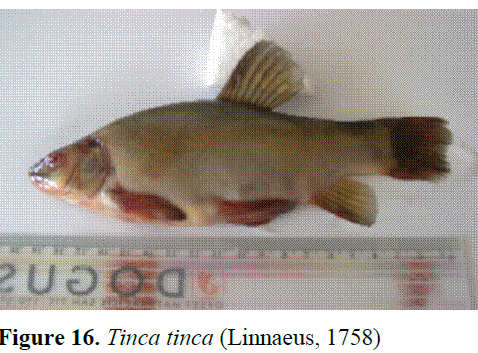
Figure 16: Tinca tinca (Linnaeus, 1758)
Cobitis evreni Erk'akan, Özeren & Nalbant, 2008
Material examined: 10 September 2004, 3 specimens.
Diagnostic characteristics: TL: 8.0-14.0 cm, D: II 7, A: II 6, P: I 7-8, V: I 4-5, C: 16, 15-16 Large brown spots along the lateral line (Figure 17).
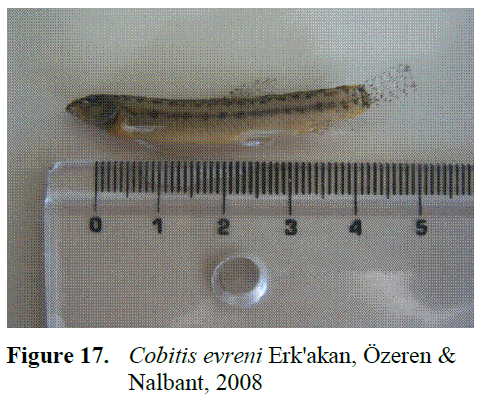
Figure 17: Cobitis evreni Erk'akan, Özeren & Nalbant, 2008
Family: Siluridae
Silurus glanis Linnaeus, 1758
Material examined: 17 July 2004, 10 speci-mens.
Diagnostic characteristics: TL: 20.5-450.0 cm, D: I 2, A: I 93, P: I 13, V: I 10, C 15. (Figure 18).
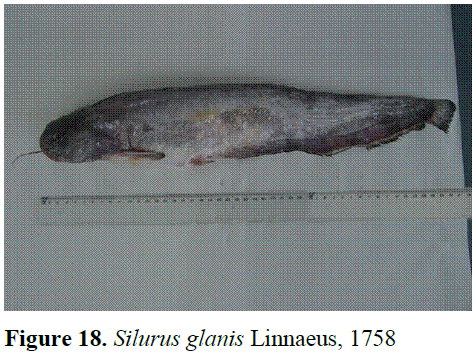
Figure 18: Silurus glanis Linnaeus, 1758
Family: Clariidae
Clarias gariepinus (Burchell, 1822)
Material examined: 15 June 2004, 2 speci-mens.
Diagnostic characteristics: TL: 22.0-300.0 cm, D: 82, A: 45, P: II, V: I 6, C: 15 (Figure 19).
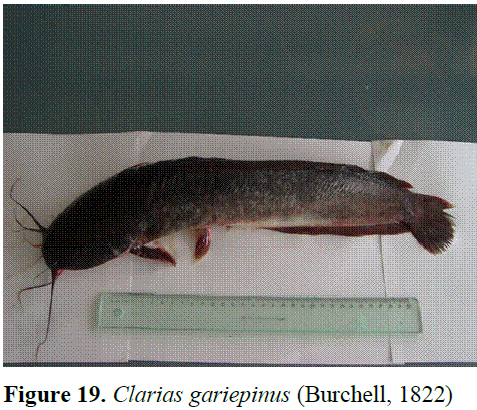
Figure 19: Clarias gariepinus (Burchell, 1822)
Family: Cyprinidontidae
Aphanius fasciatus (Valenciennes, 1821)
Material examined: 17 July 2004, 53 speci-mens.
Diagnostic characteristics: TL: 3.0-5.0 cm, D: II 8-11, A: II 7-11, P: I 13–14, V: I 5–6. Lateral line scales: 20-21 (Figure 20).
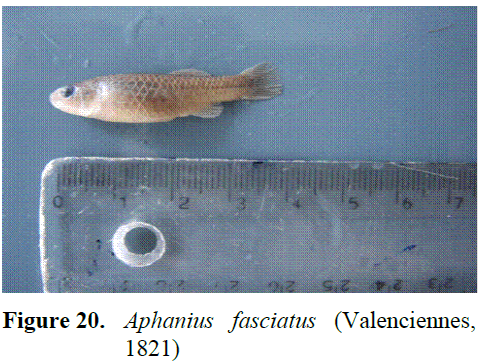
Figure 20: Aphanius fasciatus (Valenciennes, 1821)
Aphanius mento (Heckel, 1843)
Material examined: 17 July 2004, 2 speci-mens.
Diagnostic characteristics: TL: 2.5-5.0 cm, D: II 13, A: I 8- 9, P: I 12-13 (Figure 21).
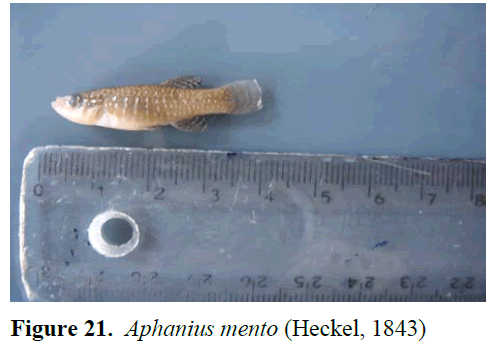
Figure 21: Aphanius mento (Heckel, 1843)
Family: Poecilidae
Gambusia affinis (Baird & Girard, 1853)
Material examined: 17 July 2004, 350 speci-mens.
Diagnostic characteristics: D: I 5, A: I 5, P: 11–12, V: 4. Male 3–4 cm, TL, Female 4–5 cm, TL, Lateral line scales: 30-33 (Figure 22).
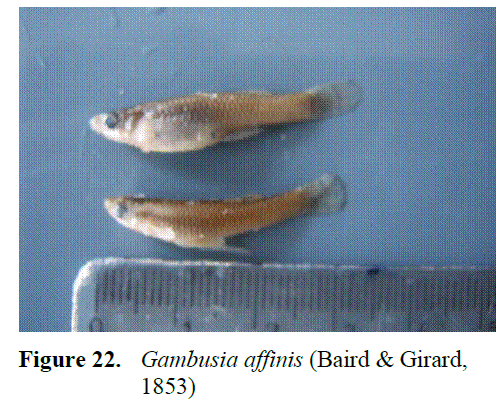
Figure 22: Gambusia affinis (Baird & Girard, 1853)
Family: Percidae
Sander lucioperca (Linnaeus, 1758)
Material examined: 17 March 2004, 1 speci-mens; 15 October 2004, 5 specimens; 17 Febru-ary 2005, 2 specimens; 18 March 2005, 2 speci-mens.
Diagnostic characteristics: TL: 14.5-52.0 cm, D1: XIII-XV, D2: II-III 19-24, A: III 11-13, V: I 4–5, P: 15-17, Lateral line scales: 80–93, Trans-versal scales: 13-16/16-24 (Figure 23).
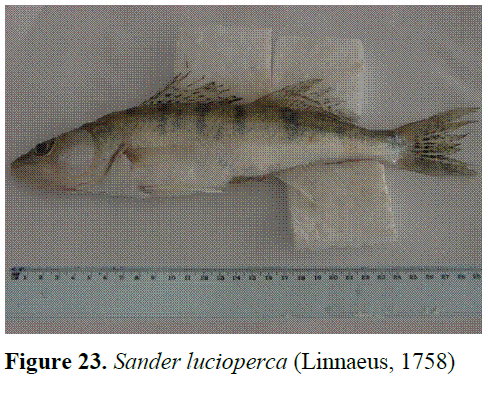
Figure 23: Sander lucioperca (Linnaeus, 1758)
Family: Blennidae
Salaria fluviatilis (Asso, 1801)
Material examined: 18 March 2005, 2 speci-mens.
Diagnostic characteristics: TL: 7.8-9.0 cm, D XII-XIII, A 18-20, P 12-13, V: 4 (Figure 24).
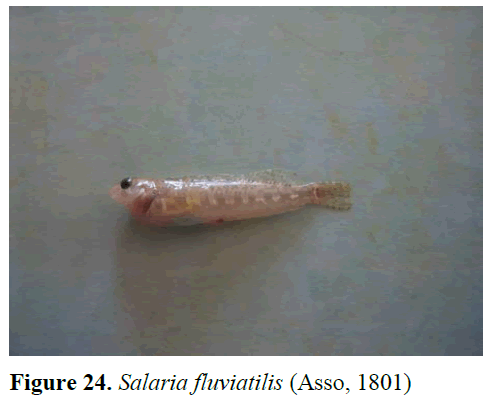
Figure 24: Salaria fluviatilis (Asso, 1801)
In the present study, a total of 23 species were determined from the Seyhan Dam Lake. How-ever, only 20 fish species were reported by Sari-han and Toral (1973) for Seyhan Dam Lake in the 1973. Of those only 8 fish species (C. carpio, L. cephalus, G. rufa obtusata, S. lucioperca, B. Fluviatilis, S. glanis, C. gariepinus (lazera), Aphanius sp.) were the same to our study. In an-other study, DSI (1985) reported 14 species, namely european eel (A. anguilla), bleak (A. al-burnus), danube bleak (C. chalcoides), carp (C. carpio), common bream (A. brama), mediterra-nean barbel (B. meridionalis), barbel (B. barbus), common nase (C. nasus), european chub (L. cephalus), Siraz (C. pestai), angora loach (N. an-gorae), spined loach (C. teania), wels catfish (S. glanis), pike-perch (S. lucioperca) in the same lake.
When early studies related to fish populations in Seyhan Dam Lake is considered, ?t seems to have an important variation in fish fauna species. Some of the significant reasons for this variation are thought to be ecological changes. Another reason for this, many fish species were intro-duced by local fishermans to Seyhan Dam Lake without permission.
Onchorhynchus mykiss is widely breed not only in pool and cage freshwaters but also in ma-rine water cages. In addition to being commer-cially cultured, rainbow trout (O. mykiss) also an invasive species, which is listed by IUCN (Inter-national Union for Conservation of Nature, IUCN) among the fastest invading 100 species across the world (Kitano, 2004). Although this species was first introduced to Seyhan Dam Lake so as to be breed in loating pools during winter months, it is considered to have escaped from cage during transport (Erguden Alagoz et al., 2010a).
S. lucioperca was first time inoculated into the Seyhan Dam Lake in 1970-1973 by DSI (1984). There after, DSI (1985) study was inoc-ulated about 60.000 young common carps into the dam lake in 1976 to 1980.
Common carp is stocked into natural waters, reservoirs, and temporarily inundated areas, in order to utilize the natural food production of these waters for enhanced capture fisheries and this is also done by DSI in Turkey.
C. carassius was reported in lakes and river system in Turkey (Balik, 1984, Geldiay and Ba-lik, 2007). C. carassius was first time determined in the Seyhan Dam Lake by the present study. Diagnostic characteristics of C. carassius indi-viduals were similar to individuals in Orontes River (Yalcin et al., 2001).
C. gibelio is an invasive species. C. gibelio were found in Terme-Samsun Simenit Lake (Helli (Ugurlu) and Polat, 2003) and ?stanbul Büyük Çekmece Dam Lake (Ozulug, 1999). This species is distinguished from C. carassius in Eu-rope by a golden-brown, silvery body colour the last simple anal and dorsal rays are strongly ser-rated. C. gibelio was first recorded by the present study in the Seyhan Dam Lake.
Up to date, two species of Acanthobrama (Acanthobrama mirabilis and Acanthobrama marmid) were reported in Turkish freshwaters by Geldiay and Balik (1996). In the present study, seven specimens of Acanthobrama were deter-mined in Seyhan Dam Lake. Acanthobrama sp. was also reported in Ceyhan River (Kara et al., 2010). According to Kara et al. (2010) this spe-cies was different from A. mirabilis and A. marmid. The diagnostic characteristics of Acanthobrama sp. generally defined in our study were similar to A. marmid, however, number of dorsal spin was different from A. marmid.
Alburnus is distributed in a large part of Syria, Iran, Caucasia, Europe and Anatolia (Ar-mantrout, 1969, Banarescu, 1977, Bogutskaya, 1990, Geldiay and Balik 1996). In our study, two specimens of Alburnus were determined in Sey-han Dam Lake and this species was different from Alburnus species. Diagnostic characteristis of Alburnus sp. determined in the present study are not consistent with the previous studies (Balik and Alp, 1994, Geldiay and Balik, 1996, Kara et al. 2010). This species is probable a new species for Seyhan River system.
European Chub (S. cephalus) belong to the family Cyprinidae, which contains numerous species of fish present in Turkey (Geldiay and Balik 1996). Diagnostic charasteristics of S. cephalus were similar features reported by Geld-iay and Balik (1996).
S. kottelati was described from the Orontes, Ceyhan and Seyhan River systems as a new spe-cies by Turan et al. (2009). S. kottelati was found in Menzelet, S?r Dam Lakes, and in Ceyhan River (Kara et al., 2010). In the present study, S. kottelati was found the first time for Seyhan Dam Lake. Diagnostic charasteristics of S. kottelati were similar to the features reported by Turan et al. (2009).
G. rufa was previous reported in Seyhan River system (Ladiges, 1960, Balik, 1988), Tigris-Eu-phrates system (Bianco and Banarescu, 1982), According to Geldiay and Balik (1996), G. rufa inhabited in Antakya, South East Anatolia dis-trict, Seyhan and Ceyhan River system. In our study, G. rufa was determined in the Seyhan Dam Lake. Diagnostic charasteristics of G. rufa were similar to that of stated by Kara et al. (2010).
C. regium is distributed in Asi, Tigris, Eu-phrates, Göksu, Seyhan and (Erguden Alagoz et al., 2010b). Ceyhan River systems (Geldiay and Balik, 1996). Our diagnostic features concurs with features for C. regium and were similar to those of Ekingen and Sarieyyübo?lu (1981), Er-demli and Kalkan (1996), Geldiay and Balik (1996), and Kara et al. (2010).
DSI (1971) and Sarihan and Toral (1973) were reported that three Barbus species (B. bar-bus, B. Meridionalis, B. mystaceus) for Seyhan Dam Lake. However, in these studies B. rajonarum has not been reported in the Seyhan Dam Lake. Recently, this species was described as L. pectoralis by Turan et al. (2008). Diagnos-tic features of B. rajanorum were similar to those of Geldiay and Balik (1996) and Kara et al. (2010).
R. rutilus is commonly distributed Manyas, Sapanca, Apolyont, ?znik, Büyükçekmece Lake, Meriç River and Seyhan Reservoir in freshwater of Turkey (Geldiay and Balik, 1996, Erguden Alagoz et al., 2008a). According to Ozyurt and Avsar (2005), R. rutilus was caught annual aver-age as 8% from the Seyhan Dam Lake. Our sam-ples were in compliance with the meristic characteristics given by Geldiay and Balik (1996) and Bogutskaya (1997) for R. rutilus
In recent years, C. capoeta angorae has been described as C. angorae by Turan et al. (2006). Diagnostic features of C. angorae in Seyhan Dam Lake were similar to those stated by Geld-iay and Balik (1996) and Kara et al. (2010).
C. erhani was first time reported from Ceyhan River and described as a new species by Turan et al. (2008). Biological characteristics and conser-vation status are not known. This species also was the first time found in this study for Seyhan Dam Lake.
To date, 10 Cobitidae species and 1 subgenus were described in Turkish freshwaters (Erk’akan et al., 1999, Kara et al., 2010). However, C. evreni in Ceyhan River was recognised by Erk’akan et al. (2008). In our study, this species was first time reported for Seyhan Dam Lake. Diagnostic charasteristics of C. evreni were sim-ilar to features reported by Kara et al. (2010) and Erk’akan et al. (2008).
T. tinca is widespread in Europe, and is also found in the anterior orient and western Siberia (Demirsoy, 1988). In Turkey, it is reported in riv-ers flowing into the Black Sea from Thrace and northern Anatolia (Kuru, 1996). The tench is in-troduced to some lake and dam lake from 1970. It is increasingly evident that T. tinca widespread in Turkey inlandwater (Karabatak, 1994). This spe-cies is introduced without permission and is rap-idly widespread because of feeding competition to carp in Seyhan Dam Lake (Erguden et al., 2007, Erguden and Goksu, 2010).
S. glanis has a wide distribution that includes the Sakarya, Manyas, Apolyont, ?znik, Gölhisar, Samsun, Kura, Aras, Seyhan and Ceyhan Rivers (Kuru, 1975, Geldiay and Balik, 1996, Alp et al., 2004). In our study, ten S. glanis was obtained from Seyhan Dam Lake.
C. gariepinus was reported in lakes and rivers in Mediterranean coast (Spataru et al., 1987, Yalcin et al., 2001, Kucuk and Ikiz, 2004). Diag-nostic characteristics of C. gariepinus individuals were similar to those individuals in Orontes river Yalcin et al. (2001) and Ceyhan River basin (Kara et al., 2010).
A. mento and A. faciatus were determined in Seyhan Dam Lake. They were mostly found in lakes. Diagnostic charasteristics of A. mento were similar to the features reported by Kara et al. (2010). Although, Sarihan and Toral (1973) re-ported that systematically only the genus base of Aphanius. In our study, A. mento and A. faciatus was the first time identified for Seyhan Dam Lake.
G. affinis is an exotic species. It was firstly introduced by French for mosquito control in Turkey in 1912 and was introduced into Amik and Gavur Lakes (Geldiay and Balik, 1996, Erguden Alagoz and Erguden, 2008b). In our study, very intensive populations of G. affinis were observed in the dam lake.
S. fluviatilis inhabits in streams and lakes which flowing into the Mediterranean Sea (Changeux and Pont, 1995, Cote et al., 1999, Neat et al., 2003). It was reported that in Turkey, they are to state in rivers and Iznik Lake which near coast Mediterranean and Aegean coasts (Geldiay and Balik, 1996). This species has been reported for Seyhan Dam Lake by Sarihan and Toral (1973).
Conclusion
Consequently, very few reports have been given on the fish fauna of the Seyhan Dam Lake. In our study a total of 12 new fish species and 1 genus of 4 families, one species (O. mykiss) be-longing to Salmonidae, 8 species and 1 genus C. carassius, C. gibelio, Acanthobrama sp., Albur-nus sp., S. kottelati, L. pectoralis, C. angorae, C. erhani, belonging to Cyprinidae, one species (C. evreni) belonging to Cobitidae, two species (A. fasciatus and A. mento belonging to Cyprinodon-tidae were first time described from the Seyhan Dam Lake.
Acknowledgements
This study was supported by Research Fund of the Cukurova University (BAPB), project number SUF.2004.YL5. We would you like to thank due to help for Dr. Davut Turan rediag-nosing the fish samples
683
References
- Alagoz, S., (2005). Determination of Ichthy-ofauna in the Seyhan Dam Lake (Adana). MSc thesis. Adana: Cukurova University, Institute of Natural and Applied Science, p. 82. [In Turkish]
- nAlagoz, S., Goksu, M.Z.L., Erguden, D., (2006). A Premiliminary research on size distribu-tion and condition factor determination of roach (Rutilus rutilus L.,1758) Population in Seyhan Dam Lake (Adana). Journal of Fish-eries and Aquatic Sciences, 23(1/3): 333-335
- nAlp, A., Kara, C., Büyükçapar, H., (2004). Re-productive biology in a native European Catfish, Silurus glanis L., 1758, population in Menzelet Reservoir. Turkish Journal of Veterinary and Animal Sciences, 28: 613-622
- nAltun, O., (1999). Gümüşbalığı (Atherina boyeri Risso, 1810) populasyonlarında gözlemlenen morfolojik varyasyonlar. Turkish Journal of Zoology, 23: 911-918.
- nArmantrout, N.B., (1969). The fishes of Iran, a preliminary checklist, Bander Enzeli, Iran. MS, pp. 39
- nBalik, S., (1984). Recherces sur les populations de Truites de La Region Thracienne. Ege University Faculty of Sciences Journal, 7(1): 129-138
- nBalik, S., (1988). Systematic and zoogeographic investigations on inland water fishes of the Mediterranean region of Turkey. Turkish Journal of Zoology, 12: 156-179
- nBalik, S., Alp, A., (1994). Akşehir Gölü’ndeki İnci balığı (Alburnus orontis, Sauvage, 1882) populasyonunun büyüme ve üreme özelliklerinin incelenmesi. XII. Ulusal Biy-oloji Kongresi, Edirne, pp. 21-29
- nBanarescu, P.M., (1977). Position zo-ogéographique de l'ichthyofaune d'eau douce d'Asie occidentale. Cybium, 3(2): 35-55
- nBanarescu, P.M., Bogutskaya, N.G., (2003). The freshwater fishes of Europe Cyprinidae 2. Part II: Barbus. The Freshwater Fishes of Europe, pp. 454
- nBattalgil, F., (1941). Türkiye Tatlı Su Balıkları. İstanbul Üniversitesi Fen Fakültesi Mec-muası, Seri B, 6: 170–186
- nBianco, P.G., Banarescu, P., (1982). A contribu-tion to the knowledge of the Cyprinidae of Iran (Pisces, Cypriniformes). Cybium, 6(2): 75-96
- nBogutskaya, N.G., (1990). Morphological fun-damentals in classification of the subfamily Leuciscinae (Leuciscinae, Cyprinidae), Communication 1. Journal of Ichthyology, 30(3): 63-77
- nBogutskaya, N., (1997). Contribution to the knowledge of Leuciscine Fishes of Asia Mi-nor. Part. 2. An. Check-List of Leuciscine fishes of Turkey with descriptions of a new species and two new subspecies. Mitt. Hamb. Zool. Mus. Inst. Band. 94: 161-186
- nChangeux, T., Pont, D., (1995). Current status of the riverine fishes in the French Mediterra-nean Basin. Biological Conservation, 72: 137-158.ndoi: 10.1016/0006-3207(94)00077-4
- nCote, I.M., Vinyoles, D., Reynolds, J.D., Doadrio, I., Perdices, A., (1999). Potential impact of gravel extraction on Spanish pop-ulations of river Blennies Salaria fluviatilis (Pisces, Blenniidae). Biological Conserva-tion, 87: 359-367.ndoi: 10.1016/S0006-3207(98)00072-X
- nDemirsoy, A., (1988). Yaşamın Temel Kuralları, Omurgalılar Anamniyota, Cilt-III/Kısım-I, Hacettepe Üniversitesi Yayınları: A/ 55, 648
- nDSI, (1971). Devlet Su İşleri: Seyhan Baraj Gölü Limnolojik Etüt Raporu. T.C. Enerji ve Tabi Kaynaklar Bakanlığı Devlet Su İşleri Genel Müdürlüğü İşletme ve Bakım Dairesi Başkanlığı Balıkçılık ve Av Hayvanları Fen Heyeti Müdürlüğü, Teknik Yayın, Ankara, 11 s
- nDSI, (1984). Su Ürünleri Faaliyetleri. T.C., En-erji ve Tabii Kaynaklar Bakanlığı, DSI Müdürlüğü, İşletme ve Bakım Dairesi Başkanlığı, İşletme Müd. Matbaası, Ankara, 89 s
- nDSI, (1985). Baraj Göllerinin Limnolojik Etüd Rapor Özetleri. T.C. Enerji ve Tabii Kaynaklar Bakanlığı, DSİ Müdürlüğü, İşletme ve Bakım Dairesi Başkanlığı, İşletme Müd. Matbaası, Ankara, 96 s
- nEkingen, G., Sarıeyyüpoğlu, M., (1981). Keban Baraj Gölü Balık Faunası, Elazığ. Fırat Ün-iversitesi Veteriner Fakültesi Dergisi, 6(1-3): 7-22
- nErdemli, A.Ü., Kalkan, E., (1996). Tohma Çayı balıkları üzerinde taksonomik bir araştırma. Turkish Journal of Zoology, 20: 153-140. [In Turkish]
- nErguden Alagoz, S., Erguden, D., Gokce, G., (2007). The Fisheries Problems and Solu- tions of The Seyhan Dam Lake (Adana). Turkish Journal of Aquatic Life, 3-5: 5-8
- nErguden Alagoz, S., Erguden, D., Goksu, M.Z.L., (2008a). Seyhan Baraj Gölü’ndeki (Adana) Kızılgöz (Rutilus rutilus L., 1758)’ün Büyüme Özellikleri. Journal of FisheriesSciences.com, 2(1): 77- 87.ndoi: 10.3153/jfscom.2008008
- nErguden Alagoz S., Erguden D., (2008b). Seyhan baraj gölü’nde (adana) yaşayan sivrisinek baliği (Gambusia affinis (Baird & Girard, 1853)) populasyonunun büyüme Özellikle-rinin belirlenmesi üzerine bir ön araştirma. Journal of FisheriesSciences.com, 2(3): 312- 320.ndoi: 10.3153/jfscom.mug.200718
- nErguden Alagoz S., Goksu, M.Z.L., (2009). Length–weight relationships for 12 species caught in Seyhan Dam Lake in Southern Anatolia, Adana, Turkey. Journal of Applied Ichthyology, 25(4): 501- 502.ndoi: 10.1111/j.1439-0426.2009.01231.x
- nErguden Alagoz, S., Goksu, M.Z.L., (2010). Age, growth and sex ratio of tench Tinca tinca (L., 1758) in Seyhan Dam Lake, Turkey. Journal of Applied Ichthyology, 26(4): 546-549.ndoi: 10.1111/j.1439-0426.2010.01476.x
- nErguden Alagoz, S., Goksu, M.Z.L., Celikkol, C., (2010a). Spring feeding habits by Escaped cage Rainbow trout, Oncorhynchus mykiss (Walbaum, 1792) in the Seyhan Dam Lake (Adana/Turkey). Journal of Applied Bio-logical Sciences, 4 (3): 7-10
- nErguden Alagoz, S., Goksu, M.Z.L., Celikkol C., (2010b). The digestive system content of King nase fish, Chondrostoma regium (Heckel, 1843) inhabiting in Seyhan dam Lake (Adana/Turkey). INOC-Tischreen University, International conference on Bio-diversity of the Aquatic Environment, Con-ference Proceedings book, pp. 365-368
- nErk’akan, F., Atalay-Ekmekci, F.G., Nalbant, T.T., (1999). A review of the genus Cobitis in Turkey (Pisces: Ostariophysi: Cobitidae). Hydrobiologia, 403: 13-26.ndoi: 10.1023/A:1003794726444
- nErk’akan, F., Nalbant, T.T., Ozeren, S.C., (2007). Seven New Species of Barbatula, three new species of Schistura and a new species of Seminemacheilus (Ortariophysi: Balitoridae: Nemacheilinae) from Turkey. Journal of Fisheries International 2(1): 69-85
- nErk'akan, F., Ozeren S.C., Nalbant, T.T., (2008). Cobitis evreni sp. nova - A, new spined loach species (Cobitidae) from the Southern Turkey. Journal of Fisheries International, 3(4): 112-114
- nGeldiay, R., Balik, S., (1996). Türkiye Tatlısu Balıkları. Ege Ünv. Fen Fak. Kitaplar Serisi No: 46, Ege Üniversitesi Basımevi, İzmir, pp. 532
- nGeldiay, R., Balik, S., (2007). Türkiye Tatlısu Balıkları. Ege Üniversitesi Su Ürünleri Fakültesi Yayınları No:46, İzmir, pp. 644 [In Turkish]
- nHelli (Ugurlu), S., Polat, N., (2003). Simenit Gölü (Terme-Samsun) Balık Faunası Üzerine Bir Araştırma. Fırat Üniversitesi Fen ve Mühendislik Dergisi, 15: 485-494
- nKalkan, E., Erdemli, A.U., (1994). A taxonomi-cal study on the fishes of Sultansuyu Stream. XII National Biology Congress Hydrobiol-ogy section. pp. 256-262. Edirne, Turkey
- nKarabatak, M., (1994). Mogan Gölü’ndeki Ka-dife balığının (Tinca tinca (L.)) Boy-Ağırlık ilişkisi, kondisyon ve gonad gelişiminde mevsimsel değişiklikler. İstanbul Üniversi-tesi Su Ürünleri Dergisi, 8: 15-30
- nKara, C., Alp, A., Simsekli, M., (2010). Distribu-tion of fish fauna on the upper and middle basin of Ceyhan River, Turkey. Turkish Journal of Fisheries and Aquatic Sciences, 10: 111-122.ndoi: 10.4194/trjfas.2010.0116
- nKirgiz, T., (1984). Seyhan Baraj Gölü bentik hayvansal organizmaları ve bunların nitel ve nicel dağılımları. Doğa Türk Zooloji Dergisi, 12: 231-245
- nKitano, S., (2004). Ecological impacts of Rain-bow, Brown and Brook Trout in Japanese Inland Waters. Global Environmental Re-search, 8(1): 41-50
- nKosswig, C., (1939). Die Faunengeschichte des Mittel und Schwarzen Meers. Türk Fiz. Ta-bii İlimler Sosy. Yıllık Bild. Arşivi., 1: 36-52. [In Turkish]
- nKosswig, C., Battalgil F., (1943). Türkiye tatlı su balıklarının zoocoğrafik ehemmiyeti. Türk Fiz. Tabii İlimler Sosy. Yıllık Bild. Arşivi., 2: 18-31
- nKucuk, F., Ikiz, R., (2004). Antalya Körfezi’ne Dökülen Akarsuların Balık Faunası. Ege Üniversitesi Su Ürünleri Dergisi, 21(3-4): 287-294
- nKuru, M., (1975). Dicle-Fırat, Kura-Aras, Van Gölü ve Karadeniz Havzası Tatlısularında Yaşayan Balıkların (Pisces) Sistematik ve Zoocoğrafik Yönden İncelenmesi, Doçentlik Tezi, Atatürk Üniversitesi, Erzurum, pp. 186
- nKuru, M., (1996). Omurgalı Hayvanlar. Gazi Üniversitesi Yayın No: 186, 2. Baskı, An-kara, pp. 841
- nKuru, M., (2004). Türkiye içsu balıklarının son sistematik durumu. Gazi Ünivesitesi Gazi Eğitim Fakültesi Dergisi, 24: 1-21
- nLadiges, W., (1960). Süâwasserfische der Türkei, I. Teil. Cyprinidae. Mitt. Hamburg Zoology Museum Institute, 58: 105-150
- nNeat, F.C., Lengkeek, W., Westerbeek, E.P., Laarhoven, B., Videler, J.J., (2003). Behav-ioural and morphological differences be-tween lake and river populations of Salaria fluviatilis. Journal of Fish Biology, 63: 374-387.ndoi: 10.1046/j.1095-8649.2003.00159.x
- nNumann, W., (1958). Anadolu muhtelif göllerinde limnolojik ve balıkçılık ilmi bakımından araştırmalar ve bu göllerde yaşayan sazanlar hakkında özel bir etüd. İ. Ü. Fen Fak. Hidrobiol. Araş. Enst. Mono-grafi 7, Fakülteler Matbaası, İstanbul
- nOzulug, M., (1999). A taxonomic study on the fish in the basin of Büyükçekmece Dam Lake. Turkish Journal of Zoology, 23: 439-451
- nOzyurt, C.E, Avsar, D., (2002). Seyhan Baraj Gölü’ndeki (Adana) Sudakların (Sander lu-cioperca Bogustkaya & Naseka, 1996) Bazı Biyolojik Özelliklerinin Belirlenmesi. Ege Üniversitesi Su Ürünleri Dergisi, 19: 77-84
- nOzyurt, C.E, Avsar, D., (2005). Investigation of the Selectivity Parameters for Carp (Cypri-nus carpio Linnaeus, 1758) in Seyhan Dam Lake. Turkish Journal of Veterinary and Animal Sciences, 29: 219-223
- nSarihan, E., Toral, O., (1973). Seyhan Baraj Gölüne sudak, Lucioperca lucioperca (Lin-neaus) 1758, yetiştirildikten sonra elde edilen ilk sonuçlar. IV. Bilim Kongresi Tebliğleri, 5–8 Kasım, Ankara
- nSarihan, E., (1974). Eğridir Gölü’nde yetiştirilmiş olan sudak (Lucioperca lucioperca (Lin-neaus) 1758)’in büyüme ve ölüm oranları. Çukurova Üniversitesi Ziraat Fakültesi Yayınları 58, Bilimsel İnceleme ve Araştırma Tezleri, Adana, 6 s
- nSarihan, E., Kumova, U., (1984). Seyhan Baraj Gölü sudak (Lucioperca lucioperca (Lin-neaus) 1758), populasyonunun sayılabilir (meristik) ve ölçülebilir (metrik) özellikleri ile ağırlık/boy ilişkisi üzerine bir araştırma, Doğa Bilim Dergisi, 8: 214–221. [In Turk-ish]
- nSozer, F., (1941). Les Gobiidés de la Turquie, İstanbul Üniv. Fen Fak. Mecm., Ser. B, 6: 128–169
- nSpataru, P., Viveen, W.J.A.R.,Gophen, M., (1987). Food Composition of Clarias gariepinus (C. lazera) (Cypriniformes, Clariidae) in Lake Kinneret (Israel). Hydro-biologia, 144: 77-82.ndoi: 10.1007/BF00008053
- nTuran, D., Kottelat, M., Kırankaya, S.G., Engin, S., (2006). Capoeta ekmekciae, a new spe-cies of cyprinid fish from northeastern An-atolia (Teleostei: Cyprinidae). Ichthyologi-cal Exploration of Freshwaters, 17 (2): 147-156
- nTuran, D., Kottelat, M., Ekmekci, F.G., (2008). Capoeta erhani, a new species of cyprinid fish from Ceyhan River, Turkey (Teleostei: Cyprinidae). Ichthyological Exploration of Freshwaters, 19(3): 263-270
- nTuran, D., Yilmaz, B.T., Kaya, C., (2009). Squalis kottelati, a new cyprinid species (Teleostei: Cyprinidae) from Orontes River. Turkey, Zootaxa, 2270: 53-62
- nUgurlu, S., Polat, N., (2007). Samsun İli Tatlı Su Kaynaklarında Yaşayan Egzotik Balık Tü-rleri. Journal of FisheriesSciences.com, 1(3): 139-151.ndoi: 10.3153/jfscom.2007017
- nYalcin, Ş., Akyurt, I., Solak, K., (2001). Stomach contents of the Catfish (Clarias gariepinus Burchell, 1822) in the Asi River (Turkey). Turkish Journal of Zoology, 25: 461-468

































